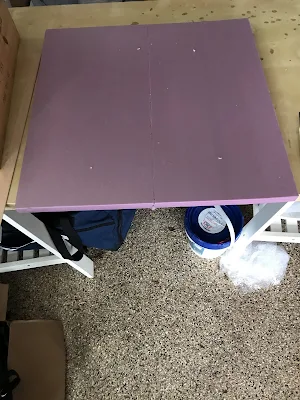 |
British/Canadian forces set up on the board on the North West corner. The Glengarry Light Infantry (GLI) split into two divisions, one heading towards the mill, the other the farm house. The Royal Artillery advanced down the road to find a good firing position. The flank companies advanced through the woods to clear it of riflemen and protect the crown forces right flank. The Battalion of Incorporated Militia of Upper Canada (BIMUC) advanced steadily forward.
The American commander deployed his rifles in divisions in the woods on both flanks. This way they could take advantage of the terrain and harass the advancing red coats. Although they had superior range they were slower to load and he choose to fire half his men each turn to insure a steady fire. (due to slower rate of fire rifles fire every other turn) He wanted to buy enough time to bring his line infantry into the table.
Once in position the Royal Artillery opened fire on the American infantry crossing the bridge. The Royal Marine Rocket battery continued to fire; and continued to send rockets flying off in all directions except towards the enemy.
The American 5th Infantry regiment shrugged off the morale check and quickly deployed into line. They moved forward to engage the enemy and to give room for the remainder of the brigade to deploy. The Rifle men were driven back by superior numbers with a few casualties were caused on either side.
But the 1st Rifle Regiment and 5th Infantry had bought time. The American commander now had two line battalions deployed and two more battalions were arriving. It was time to advance and drive off the enemy.
To be continued.....
 |
| situation at end of this phase. |
 |
| more action to come lads! |





















































